Residential and commercial sector
Is energy used economically?
Residential and commercial sector
Commercial sector is composed of residential sector and commercial sector (building, hotel, department store, service, etc.).
Electric equipments like air conditioner or lighting are operating constantly both in household or commercial facility, and are comsuming huge electricity in order to keep indoor condition pleasant. Those equipments are being improved to consume less electricity year by year, as can be seen in the annual energy consumption trend.
To obtain much benefit with less energy, equipment manufacturers are exerting technology development, and also we consumers are trying not to waste energy.
Household equipment
Size of green squares shows the image of the amount of energy usage. Smaller size indicates less energy consumption.
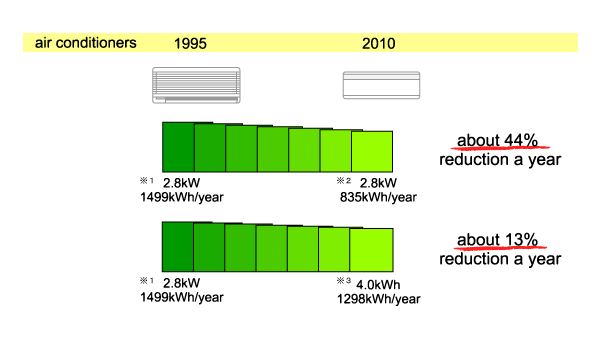
Source *1 '1999-2000 Handbook for rational use of energy', Energy Conservation Center, Japan, changes in the energy saving performance of the air conditioning, based on the energy saving progress of household equipment. *2,*3 '2010 winter catalog of energy saving performance', Agency for Natural Resources and Energy, METI, the average of seasonal power consumption, based on the energy-saving performance list by the cooling capacity.
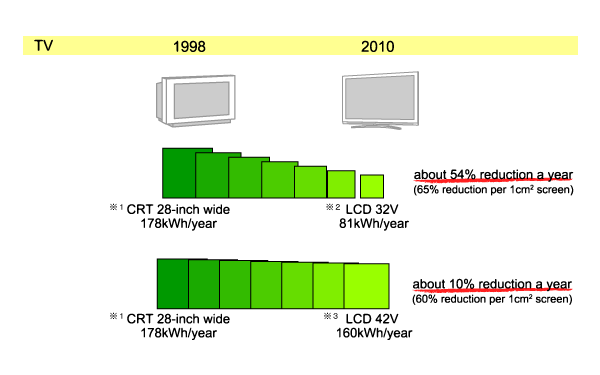
Comparing the replacements of CRT 28-inch wide TV with LCD 32V or LCD 42V TV.
Source *1 '1999-2000 Handbook for rational use of energy', Energy Conservation Center, Japan, changes in the energy saving performance of the TV, based on the energy saving progress of household appliances.
*2,*3 '2010 winter catalog of energy saving performance', Agency for Natural Resources and Energy, METI, the average of annual power consumption, based on the energy-saving performance list by screen size.
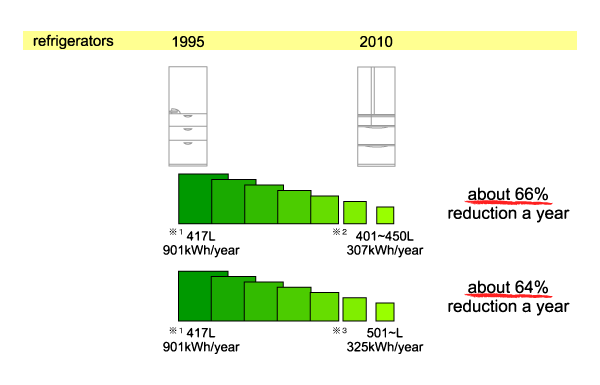
Comparing the replacements of the refrigerator with a refrigerator of almost the same capacity or larger capacity.
Source *1 '1999-2000 Handbook for rational use of energy', Energy Conservation Center, Japan, changes in the energy saving performance of the refrigerator, based on the energy saving progress of household appliances.
*2,*3 '2010 winter catalog of energy saving performance', Agency for Natural Resources and Energy, METI, the average of annual power consumption, based on the energy-saving performance list by rated internal capacity.
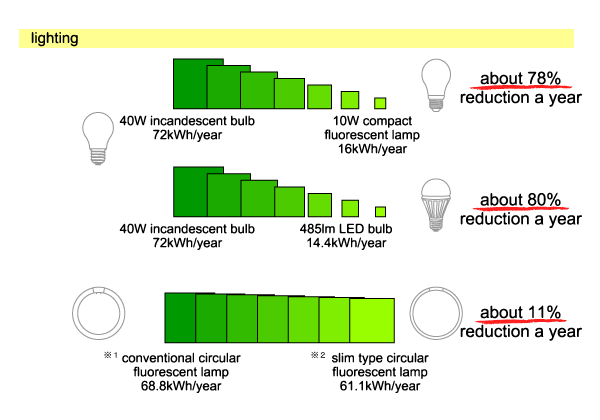
Lighting time is assumed 2000 hours per year
*1 Referred to catalog values of the major manufacturers' products.
*2 *3 Calculated wattages per 3000lm; i.e. the weighted average of the catalog values of conventional (32, 40-W) and slim (27W and 34W) lamps.
Commercial equipment
Size of blue squares shows the image of the amount of energy usage. Smaller size indicates less energy consumption.
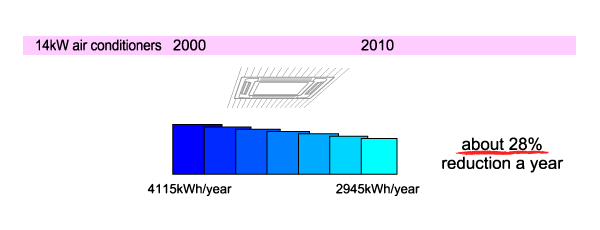
source: 'Activity highlights, 2010 CSR report', DAIKIN, accessed on August 22, 2012
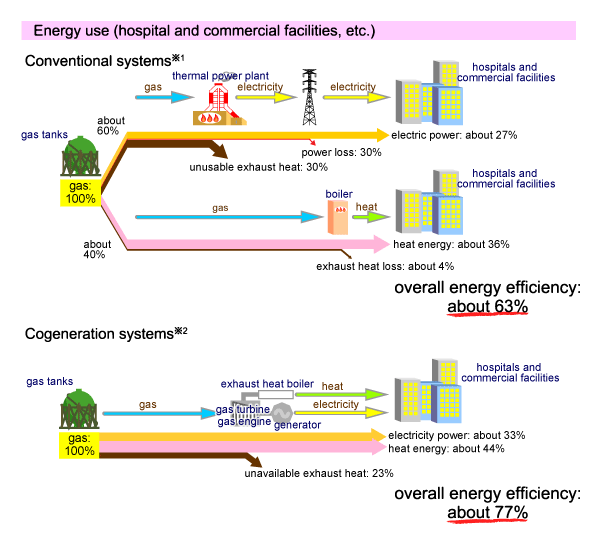
*1 Referred to the current average in Japan. The assumed heat-to-power ratio is 1.33 for comparison.
Source: Prepared by RITE, based on 'The Energy Data and Modelling Center', IEE, Japan
*2 The assumed heat-to-power ratio is 1.33.
Source: Prepared by RITE, based on catalog values of various cogeneration
Residential
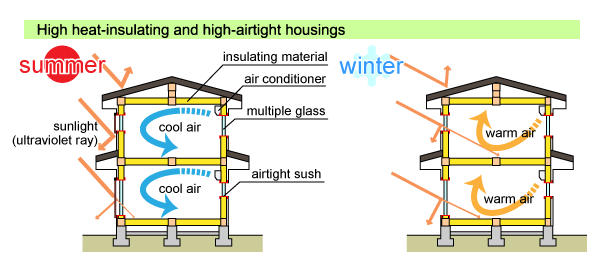
High heat insulation reduces heat transfer between indoor and outdoor heat, and high-airtight seals air getting in or out. As housings with such high performance are hardly affected by the ambient air, the effect of suppressing energy consumed by heaters or air conditioners can be expected.
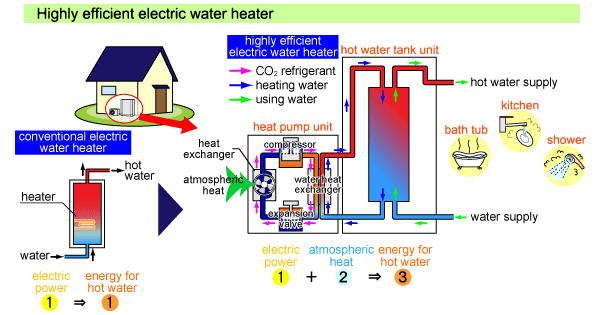
Air is taken into the outdoor unit and CO2 absorbs the heat. Pressure is applied to the CO2 in the compressor using electricity to make CO2 hot. The water heat exchanger conveys heat from the hot CO2 to the water. Then, CO2 is cooled by expansion in the expansion valve, while the warmed water is stored in the hot water storage tank.
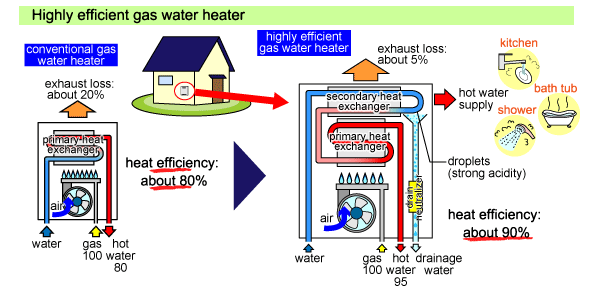
A conventional gas water heater had let the 200 ℃ heat go outside. In a highly efficient gas water heater, the secondary heat exchanger recovers heat which has been conventionally discharged and warms water. Warming the water again by the primary heat exchanger makes the thermal efficiency high.










